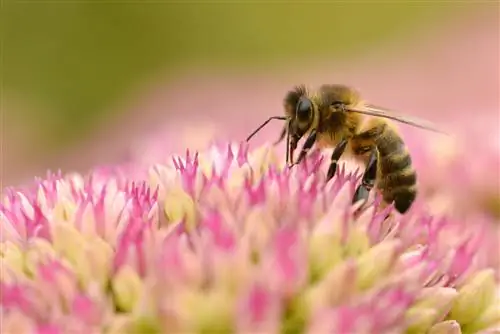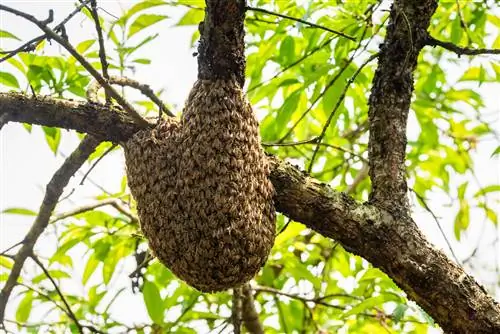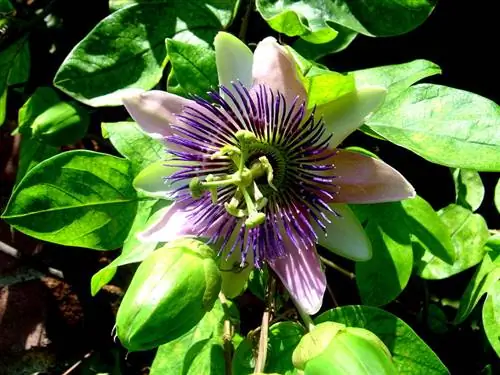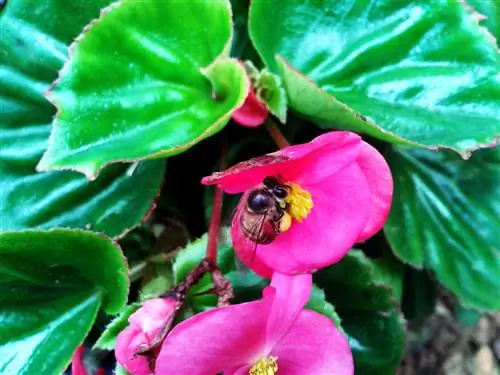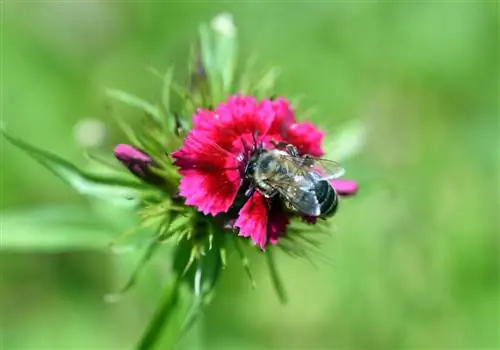- Author admin [email protected].
- Public 2023-12-16 16:46.
- Last modified 2025-01-23 11:22.
The clump-forming Sedum species are generally referred to as stonecrops. From August onwards, these form stems that are up to seventy centimeters high and have white, pink or purple umbels on them.
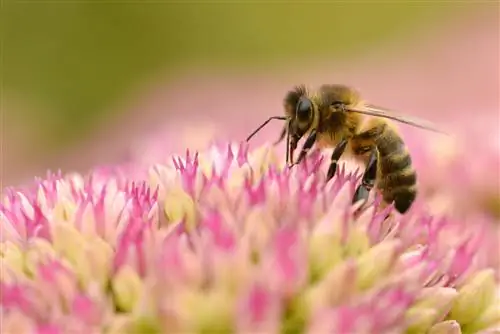
Are the flowers of the sedum popular with bees?
The sedum isvery popular with bees. Even as they bloom, when the flowers are still delicately colored, insects swarm the umbels and drink from the abundant nectar. The insects also appreciate the protein-rich pollen.
What makes sedum so valuable for bees?
Theflowering periodof the stonecrop extends from the end ofAugustandtofar into theOctober into it. The perennial thus ensures a richly laid table when other traditional plants have already bloomed.
The flower umbrellas, up to ten centimeters in size, consist of countless individual flowers that, with a value of 3, are quite rich in nectar. The bees drink from the sugary juice, some of which they use as “jet fuel” and transport the rest to the hive.
Why do bees also need sedum pollen?
The sedum does not provide the bees with as muchflower pollenas other flowering plants, but it does sotofar into theAutumnwhen theprotein-rich food becomes scarce. The pollen that the bees collect with their hind legs on the sedum is carried by the hard-working animals into the burrow, where it is processed into bee bread and fed to the brood.
Tip
The sedum is valuable for many insect species
It's not just bees that you can observe on the sedum flowers. Hoverflies and bumblebees also benefit from the perennial's we alth of nectar. Some butterflies that fly late in the year, such as the peacock butterfly, the small tortoiseshell or the C butterfly, also like to seek out this reliable food source.

